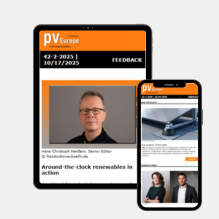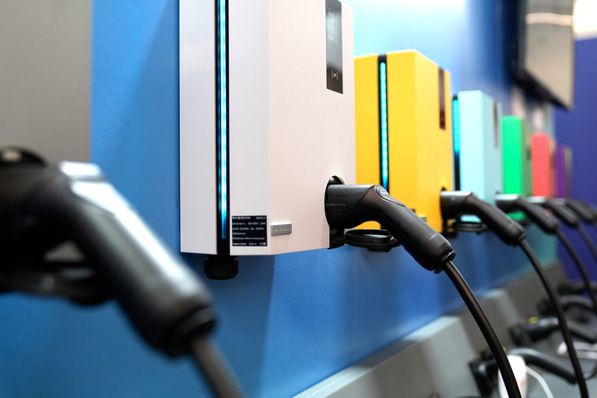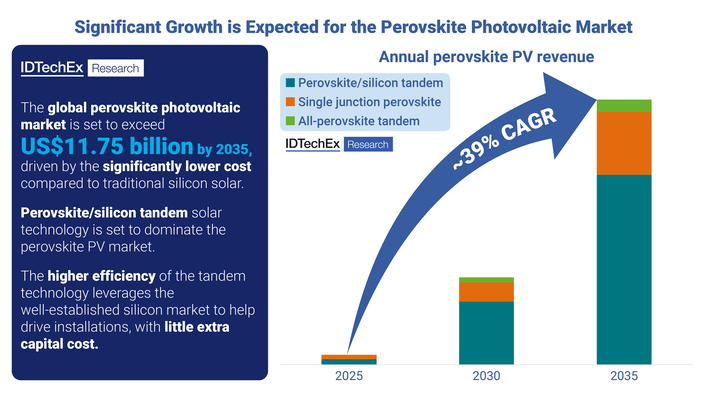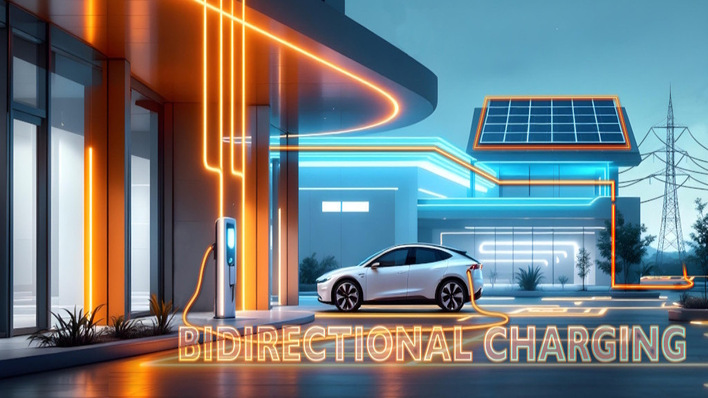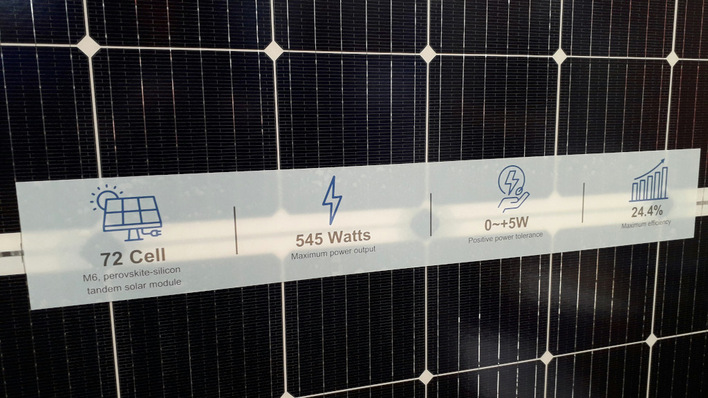The development of perovskite-silicon tandem solar cells marks a significant breakthrough in solar technology, combining two semiconductor materials (silicon and perovskite) to harness a broader spectrum of sunlight. This pairing allows each material to capture different parts of the light spectrum and maximises energy conversion. The potential of these tandem cells is immense, with efficiencies projected to reach up to 45 percent. Longi, a leading manufacturer in the field, has already set a remarkable lab record of 33.9 percent, paving the way for even more advanced solar technologies in the near future.
Also see: Perovskite – the next major solar technology?
The mass production of perovskite-silicon tandem cells is expected to begin in 2027, according to a study by the German Mechanical Engineering Industry Association (VDMA). Ongoing research aims to determine how these high-efficiency cells can be successfully launched and scaled as standard products. As with any solar technology, their commercial application and durability are just as crucial as their efficiency.
Continued material research
Research so far has focused on efficiency, but other factors are also key. Alongside technological and financial considerations, regulatory requirements must align for a successful launch of new solar technologies. Currently, perovskite contains lead, which could affect the economic viability of tandem solar cells in the EU due to the RoHS Directive.
Also see: Video – 2024 perovskite breakthroughs are the future of solar
The success of tandem solar cells will also hinge on ongoing material research to replace rare materials like indium and establish recycling processes for harmful substances like lead. This is crucial for the industry to fulfil its responsibility in delivering sustainable and environmentally friendly power generation technology.
Stay informed, get our free newsletter twice a week
The market launch of perovskite-silicon solar cells is expected to usher in a new era of solar technology, essential for further reducing costs and significantly boosting global solar power generation through higher efficiency. (hcn)
This article was first published by Intersolar Europe. pv Europe is media partner of Intersolar Europe as part of The smarter E Europe, which takes place from 7-9 May in Munich.



